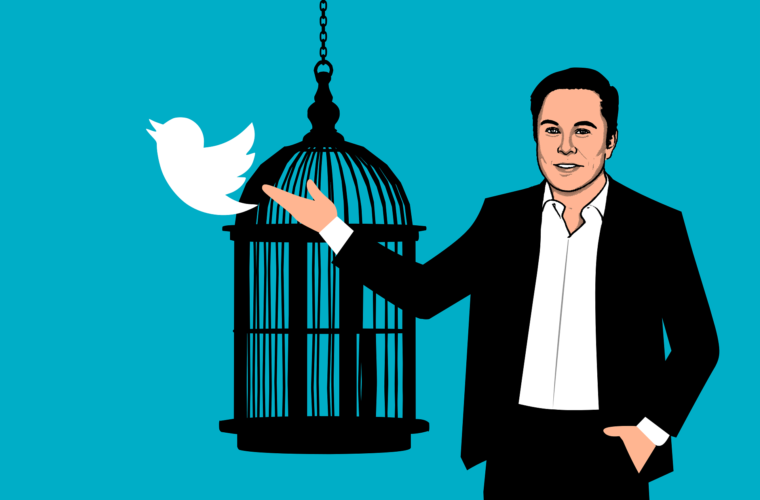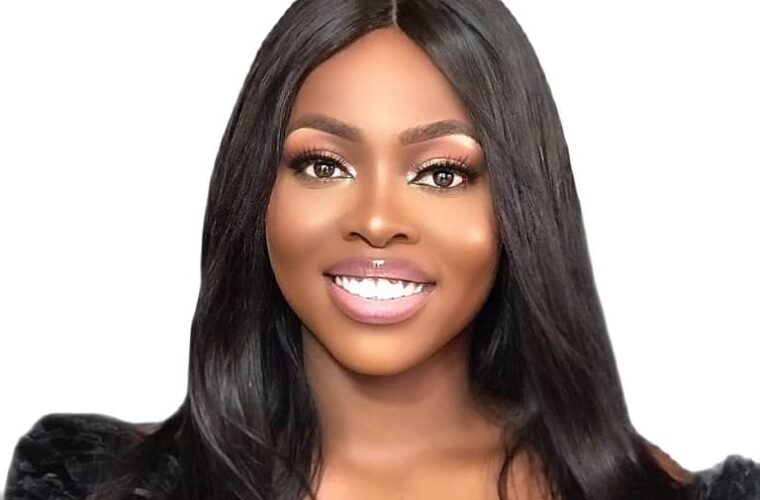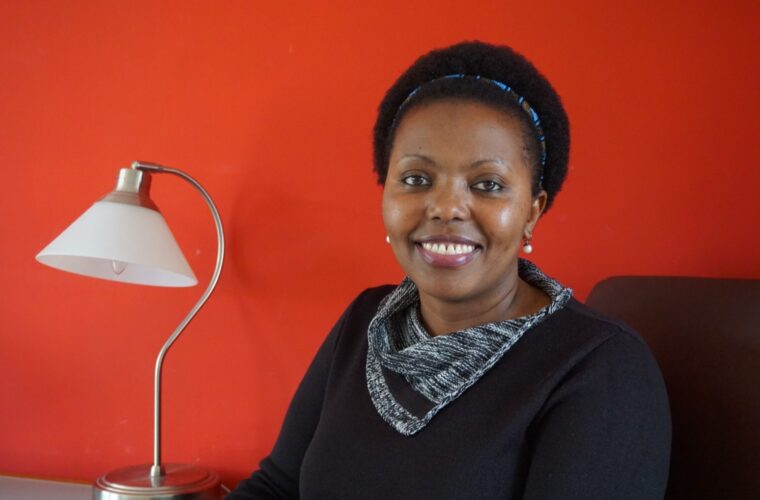The tech world is experiencing a surge in healthcare apps, particularly since the pandemic swept the globe. According to figures from 10to8.com, in 2020 alone, the total market value for healthcare apps had risen to 39 billion euros globally.
‘Your health is your wealth’ has never proven such a profound statement by consumers or healthcare professionals as they use technology to aid diagnosis. A study by MobhiHealthNews has revealed that 72 percent of healthcare professionals said they predict patients who use health apps take more responsibility for their wellbeing.
Not losing sight of this trend in the market and wanting to drive real change worldwide, Irish entrepreneur Dr. Kate Coleman set about using technology to help battle glaucoma, a disease that, if left untreated, can result in blindness. It was her experience of working in Africa that led her to develop life-changing technology that she hopes will aid in detecting signs of the debilitating condition worldwide.
According to the Optical Consumer Complaints Service, around 80 million people have Glaucoma globally, with 50 percent of individuals unaware that they have it.
Rebecca Lee interviewed the Founder and CEO of iKey, Dr. Kate Coleman, and asked her about the concept, her time in Africa, and the technology behind the life-transforming app.
Kate, can you tell us a bit about where the concept of iKey came from?
I work as an eye surgeon in Dublin. In 2006 I established a charity (Right to Sight) to train and empower African eye surgeons with cutting-edge technology and equipment to sustainably tackle the awful cataract crisis there.
We hired an Indian cataract surgeon to train African surgeons in our first hospital in the Congo. He was also a glaucoma specialist and contacted me to say that he was shocked by the level of silent blindness from Glaucoma amongst even young Africans. I contacted some glaucoma experts in the USA, and we started looking at possible solutions. Nicknamed the ‘silent thief,’ chronic (open-angle) Glaucoma is genetically inherited and much more severe in an African eye.
It currently affects 80 million people globally and increases with age and with family history. The optic nerve at the back of the eye (retina) gets thinner as sight is lost. Once detected, most Glaucoma is easy to treat with nightly drops or one laser (SLT) treatment. Later, when flying home to Ireland, I first developed the idea, and the passport check used facial recognition. I thought, what if we could use a photograph of the nerve at the back of the eye the same way? That’s when the idea of using A.I.on a photo of the optic nerve as a way to alert to silent change and prevent needless glaucoma blindness was developed.
Tell us about the technology behind it?
We have trained and patented a supervised iKey Ai platform of algorithms using specially annotated data. This is a totally disruptive technology – normally, only eye experts take fundus photographs. More recently, the fundus cameras are becoming more widespread and entering non-eye expert areas such as GP practices. They are even becoming available in some supermarkets and drugstores in America. Lens adaptors now exist to take fundus photos on smartphones. A.i. algorithms are already available on some fundus cameras for automatically diagnosing diabetic retinopathy ( e.g., IDX) and Glaucoma. IKey will say if the optic nerve has changed compared with an earlier photo but will not say why.

How accurate are algorithms in terms of detecting various illnesses?
iKey is not diagnostic but aimed at the wellness/screening market. It does not make a diagnosis, there are many possible reasons for the change on the photo of the optic disc, but knowing about silent change, an ordinary happening in Glaucoma, for example, can allow early intervention and sight protection. Currently, the iKey accuracy is 91 percent which is very significant as a screening tool.
This means that with nine out of ten people who have a chance of silently losing their eyesight with optic nerve change, it can alert them, and they can be picked up for sight-saving treatment. To use iKey, all you need to do is upload a pair of fundus photos to the iKey App (for example, buy them from your optical shop) and register them as baseline images. When you upload new images in the future, you just need to press a button to ‘iKey’ and compare. Nine times out of ten, it will detect changes in the optic nerve. Once you have that baseline photograph, it can also be used for telemedicine which experts can refer back to in the future.
Do you believe algorithms are the way of the future when it comes to detecting severe diseases?
I believe supervised algorithms are, certainly. I think there will be a time when we will have a combination of a set of variously trained supervised algorithms, which will help with even earlier change detection. I have colleagues doing clinic pilots across the world. They are comparing other ophthalmic technology findings with iKey, for example, looking at ultrasounds of the eye, which will be very helpful diagnostically.
What were the biggest challenges you faced in developing such advanced technology?
The big challenge was when I started. When you come up with concepts that no one else has ever thought of before, you tell people, and they think your idea is ridiculous. I remember speaking with the first investor support system, and the expert there didn’t believe it was a new business idea, that diagnostic algorithms had already covered it. They couldn’t understand this. I had people questioning how I could possibly make this up, that if it worked, it would be known already. I am so lucky that I also met investors who had the same vision as me, and that was to realize that this app could save sight for millions of people.
What are your ambitions for the company?
We are hoping that, down the road, the iKey platform will evolve into including medi-tech with an ability to assist ophthalmologists in anticipating glaucoma progression at the earliest stages. As soon as Glaucoma is detected, it’s easy to stop it – it can be treated with one eye drop or laser treatment. Unfortunately, you cannot get your eyesight back once it’s gone. The earlier somebody does this; the more sight can be saved globally. The second anyone stores their image on iKey, it can be accessed with their private password and stored indefinitely.
The user will always have that reference image, and that’s the whole idea. It’s all about the same motive, how do we get out there and make people more aware of us. We abide by ‘detection for sight protection. To do that, you must have a baseline image and get people to register. It’s all automatic – it’s not a diagnosis; it’s wellness that is password protected. We have also invested in a brand new storage system where the only person who can identify your photograph is you unless you reveal your password. We will be driving the adoption of iKey at an earlier stage because we know from initial scoping that we can confirm a child is 13years and under just by their iKey. This could be used for child cyber security.
As a doctor entering the tech startup scene, what was your most significant barrier?
I had to be careful about having conversations until we had the IP patented, and some people wouldn’t sign NDAs. Another barrier was going for funding – I had to start going around and convincing people to invest. The app is entirely funded by private investors. For me, getting it up and running was always a priority.
Tell us a bit about your work in Africa; what made you travel there?
In 2006 I heard they had a dire shortage of eye surgeons there. I had got wind that seven million people were walking around blind, despite just needing a ten-minute cataract operation. I was working in Blackrock Clinic Dublin then, and I set out to improve conditions for eye surgeons in Africa to deliver the same standards of eye care as in my hospital. It was all about bringing cutting-edge technology into Africa to create a sustainable income for surgeons through high-quality surgery.
The result of this was an ability to cross-subsidize eye care for the poor, create a facility for training African surgeons locally, and an incentive for local African doctors to select eye surgery as a rewarding career. We consulted with the Aravind eye care system and the LV Prasad hospitals in India to adopt their models for Africa. I knew many people would want to work in that area if I had job satisfaction. In the end, I also brought in two glaucoma lasers that we didn’t even have in Ireland then. Other doctors and I worked with some existing local hospital systems to upgrade them, and we even sent staff off to India to receive additional training. It’s all about cutting-edge technology and sustainability.
You are also the founder of Right to Sight – can you tell us a bit about the organisation?
I founded Right to Sight in 2006. I launched it alongside Ralph Fiennes and Mary Robinson in the Royal College of Surgeons in Ireland. To date, we have capacity-built over 35 hospitals in Africa, including some bread new builds. Dr. Trine Jacobsen in Norway has driven it in Kenya over the last ten years. I am excited about bringing iKey into some of these centers.
And finally, what stage of development is iKey currently at?
Ikey is going out into beta testing and pilots in optician and medical practices soon. We want to drive adoption firstly by people and families with Glaucoma. It will all be happening over the next few weeks. Then it’s a question of getting it out to the public to get as many registered as possible for the best chance of saving the most sight. When you have algorithms, you need to fine-tune them all the time, and we will constantly work and improve what’s there.
The world is changing. The companies who make the fundus cameras are making them much more widely available, and, as a result, I believe iKey will be much more accessible over the next few years. We will also be doing beta testing and pilots globally in select places, especially with populations with advanced Glaucoma, such as South Africa. We will publish the opportunities on the iKey website for those interested in collaborating.



